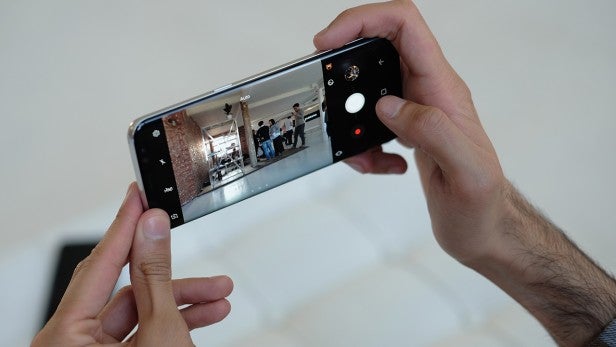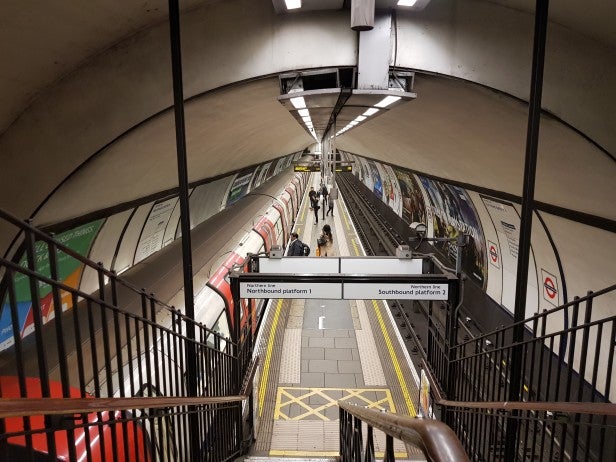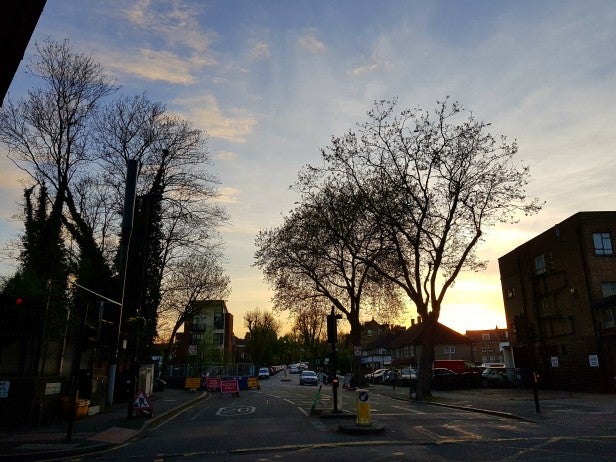Samsung Galaxy S8 Review - Camera Review
Camera
This is the future of phones

Sections
- Page 1 Samsung Galaxy S8 Review
- Page 2 Performance and Software Review
- Page 3 Camera Review
- Page 4 Battery Life and Verdict Review
Samsung Galaxy S8 – Camera
The S8 is a sizeable improvement over the S7 in almost every area, but the camera has received the fewest upgrades – on paper, at least. There’s no dual-sensor system here, no wide-angle lens or variable aperture. Instead, there’s a single 12-megapixel sensor behind a wide f/1.7 lens that uses the same Dual Pixel tech as the S7.
Related: Best Android Phones

The only obvious addition is a new multi-frame image processor that takes three shots every single time you snap, reducing blur and leaving you with a sharper shot. But simply looking at the spec sheet reveals only half the story.
The Galaxy S8, like the Google Pixel, shows it’s as much about the optics and sensor as how the software and image signal processor (ISP) work together. The photos achieved by the Galaxy S8 are truly stunning, and it’s a huge jump from the already excellent Galaxy S7.
The first thing you’ll notice about the camera is just how fast it is. A double-tap on the power key opens the camera quicker than any other phone, and focusing is equally snappy. I’ve probably taken over 1000 photos with the Galaxy S8, and no more than two or three have had to be deleted because they were either out of focus or the sensor had focused on the wrong spot. That’s incredible for a phone – even Google’s Pixel.
It’s a versatile camera too, whether you’re taking landscape shots or portraits in daytime or at night. The fantastic auto-HDR mode – something that’s turned on by default and I would suggest keeping on – levels out exposure and contrast when there’s bright sunlight, leaving you with intensely colourful shots. Sometimes you’ll find the colours more vibrant than they actually are, especially on the already quite saturated display, but that isn’t something I necessarily dislike.
Click on the pictures below to see the full-resolution version

The level of detail is fantastic
 Landscapes have plenty of depth and the auto-HDR mode balances exposure well
Landscapes have plenty of depth and the auto-HDR mode balances exposure well

Natural bokeh is much better than a fake effect

Pictures have plenty of depth
Detail is some of the best around too, even though there are phones with much higher megapixel counts. Whether it’s dew on a blade of grass, a raindrop on a leaf, or a single hair on a dog – they’re captured perfectly.
The wide f/1.7 aperture lens might not be any wider than the Galaxy S7’s, but it lets enough light through to create that lovely shallow-depth-of-field look. There are no fake aperture modes to give a blurry background, but the camera gets a much more natural-looking bokeh effect all by itself.
That wide aperture helps with low-light shots too, with more light getting into the sensor, giving you better results. The shutter and autofocus are still fast, while optical image stabilisation does give the S8 the upper hand over the Pixel for pub and club shots.

Even with poor lighting shots looks good

Colours look strong even at night
I can’t say enough good things about the camera on the Galaxy S8 – it’s reliable, versatile and churns out shots that need little to no tinkering pretty much every time. The app is great too, and it’s functionally comprehensive yet easy to use. You can save photos as RAW files, stabilise your videos, or add a Live Photos-esque moment of movement before the actual photo. There’s a pro mode too, but the auto mode is so good that you probably won’t need it.
On the front there’s a new 8-megapixel sensor with an f/1.7 aperture. It has autofocus, which remains a rarity on selfie cameras, and takes great pictures too. If you like Snapchat-style augmented filters, then Samsung includes a bunch of them.
Video tops out at UHD, but stick to 1080p and you’ll benefit from HDR and impressive tracking autofocus.
How we test phones
We test every mobile phone we review thoroughly. We use industry standard tests to compare features properly and we use the phone as our main device over the review period. We’ll always tell you what we find and we never, ever, accept money to review a product.


